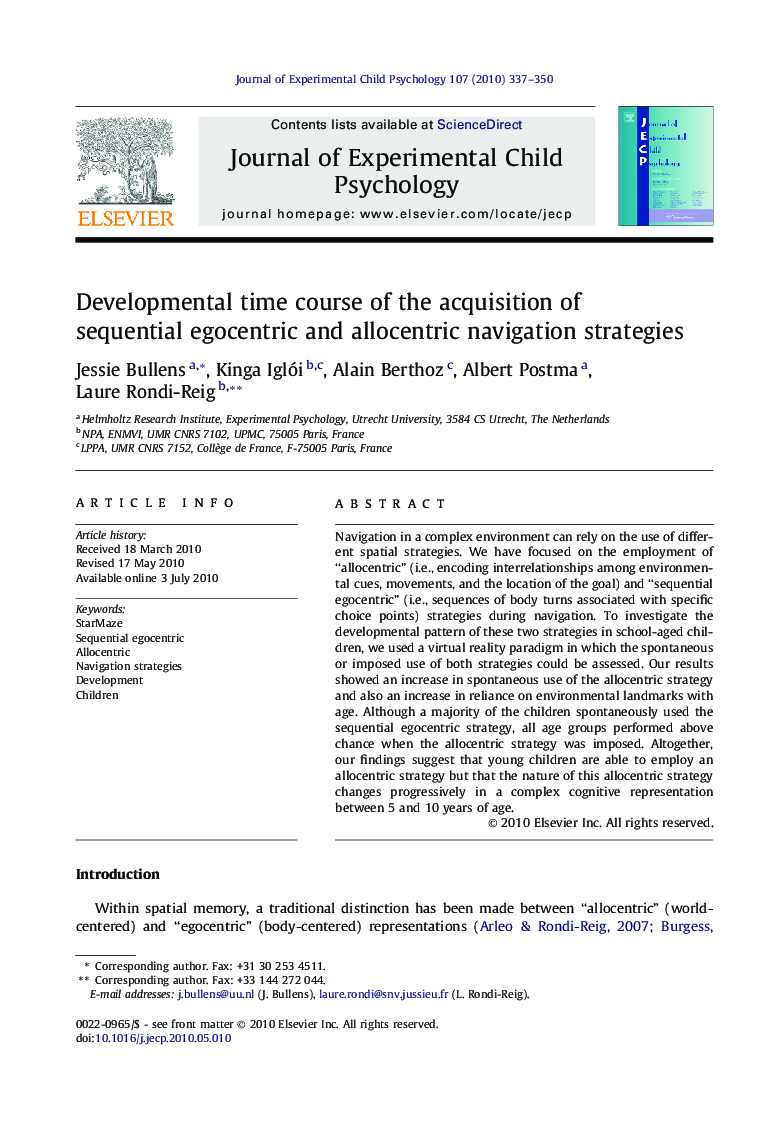| Article ID | Journal | Published Year | Pages | File Type |
|---|---|---|---|---|
| 918490 | Journal of Experimental Child Psychology | 2010 | 14 Pages |
Navigation in a complex environment can rely on the use of different spatial strategies. We have focused on the employment of “allocentric” (i.e., encoding interrelationships among environmental cues, movements, and the location of the goal) and “sequential egocentric” (i.e., sequences of body turns associated with specific choice points) strategies during navigation. To investigate the developmental pattern of these two strategies in school-aged children, we used a virtual reality paradigm in which the spontaneous or imposed use of both strategies could be assessed. Our results showed an increase in spontaneous use of the allocentric strategy and also an increase in reliance on environmental landmarks with age. Although a majority of the children spontaneously used the sequential egocentric strategy, all age groups performed above chance when the allocentric strategy was imposed. Altogether, our findings suggest that young children are able to employ an allocentric strategy but that the nature of this allocentric strategy changes progressively in a complex cognitive representation between 5 and 10 years of age.
